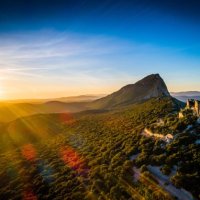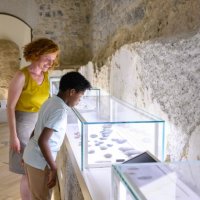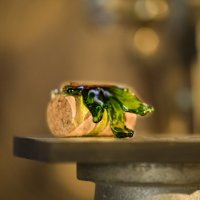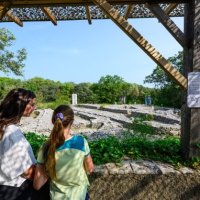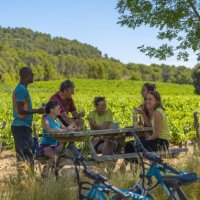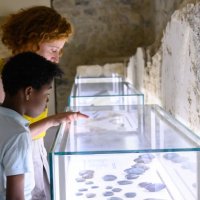In praise of biodiversity
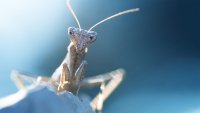
In the Grand Pic Saint-Loup, we are very attached to a precious asset: remarkable biodiversity, a legacy of our Mediterranean heritage.
Take a walk in the Grand Pic Saint-Loup and you'll marvel at the diversity of its landscapes. Here, oak and pine forests, lush green valleys and fragrant garrigue provide a wide range of habitats for wildlife. On a walk, picnic or swim, you'll come into contact with a whole world of animals and plants, an extraordinary biodiversity that shares its ecosystem and habitats with us.
Stroll through the garrigues and you'll come across lizards and butterflies, warblers and falcons. Because the landscapes are so varied, you may find several branches of the same species, each adapted to a different habitat.
The Mediterranean warbler, for example, has six branches in the region: some prefer wooded areas, which are also popular with squirrels, while others feast on insects in low-lying vegetation.
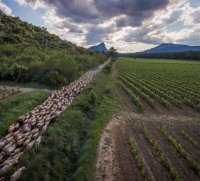
There are rare species, some protected. For example, cave bats nest in the Hortus cave. They feed on mosquitoes and other unwanted agricultural species. On the banks of the Hérault, the dampness benefits ash and poplar trees. Wetlands are fragile but essential areas. The European otter, a protected species, has made a comeback on the banks of the Lamalou. You may also be lucky enough to spot a kingfisher, recognisable by its electric blue plumage. It skims the water like an arrow to spot the fish and fry that abound in the river.
Upstream, dragonflies enjoy the cool waters of the Buèges, while the tree chaffinch sings along with the black cicada. The southern tree frog has made its home in the ponds of the London plain. We can all do our bit to help maintain this richness.
When you're on holiday, choosing soft mobility, eating locally and getting information from professionals and institutions is also a great way to enrich your trip, develop your curiosity and meet new people. Discovery and learning are also part of travel...
Biodiversity & environmental protection
A European commitment to protecting habitats and biodiversity.
The Mediterranean basin is the third richest hot-spot in the world in terms of plant diversity, and is home to an exceptional range of wildlife. In 2019, the area received the "Territoire Engagé pour la Nature" award. There are four Natura 2000 sites in the Grand Pic Saint-Loup area: Pic Saint-Loup, Hautes Garrigues du Montpelliérais, Gorges de l'Hérault and Lez.
These geographical areas are home to natural environments and wild animal and plant species that have been identified as rare or fragile. The aim of the European Natura 2000 programme is to preserve this biodiversity while taking into account the economic, social and cultural realities of the people living in these areas.
The Grand Pic Saint-Loup intercommunality, which is responsible for "managing natural environments for the Natura 2000 ecological network", is the coordinator of the Pic Saint-Loup and Hautes Garrigues du Montpelliérais Natura 2000 sites.
The Grand Pic Saint-Loup area is home to 4 Natura 2000 sites.
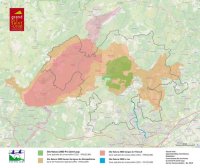
- Natura 200 Pic Saint-Loup
- Natura 2000 Hautes Garrigue du Montpelliérais
- Natura 2000 Gorges de l’Hérault
- Natura 2000 Le Lez
